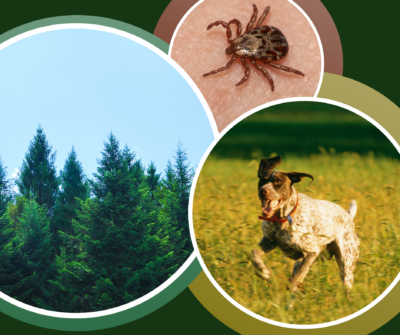Spotting Rocky Mountain Spotted Fever

What is it?
Rocky Mountain Spotted Fever
Rocky Mountain Spotted Fever (RMSF) is a disease that can infect humans and dogs. In the US, it is most frequently transmitted by Rocky Mountain wood ticks and American dog ticks. Most infections occur between March and October.
What are symptoms in dogs?
Towards the beginning of the disease, your dog may display symptoms including lethargy, fever, swelling of the face or limbs, enlarged lymph nodes, coughing, or difficulty breathing. You may also notice a decrease in their appetite, vomiting or diarrhea, and eye changes. As the disease progresses, symptoms may include the appearance of red spots on the eyelids and mouth, sudden bleeding, or neurological changes such as impaired balance, confusion, and pain.
Is it fatal?
Unfortunately the disease can be fatal or have long term neurologic consequences if the disease progresses. Seeking immediate treatment if you are concerned about RMSF is the best way to minimize long term problems or death.
How do I know if my dog has RMSF?
If you start noticing any of the symptoms above, particularly if you have been in a tick infested area, seek treatment right away. Your veterinarian will take a blood sample to check antibody levels. Because the test may take several days and faster treatment leads to better outcomes, your veterinarian will likely start treatment immediately instead of waiting for test results to come back.
What kinds of treatments will my dog receive?
The primary treatment for RMSF is antibiotics as the disease is caused by the bacteria Rickettsia rickettsii. Depending on the severity of the disease, your veterinarian may also recommend treatment for dehydration and bleeding; hospitalization may be recommended for close monitoring.
What can I do to prevent my dog from getting RMSF?
- Check your dog carefully for ticks after time spent outside, particularly if you’ve been in a wooded or grassy area. The disease is transmitted after the tick has been attached for 5-20 hours so prompt removal is key.
- If you do find a tick on your dog, carefully remove it by the head using tweezers. Be careful not to squish the tick as diseases are transmitted through fluids. Wash your hands well and try to avoid touching ticks to keep your self healthy! Healthy humans help make healthy pups.
- Talk to your primary care veterinarian about tick prevention.
Further Reading: Merck Veterinary Manual, VetFolio, CDC
